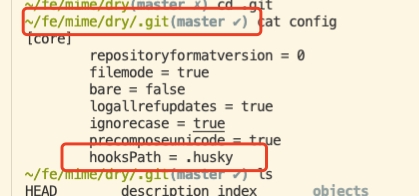使用 rollup 打造自己的 npm 包 (全流程)
本文大致梳理了使用 rollup 打造自己 npm 包的一些流程,其中包括测试,文档,发布等内容。大多是流程的梳理,过程中的细节较多并未一一写明,阅读过程中可配合 源码仓库 一起理解。
1. 使用 TypeScript
安装 TypeScript: yarn add typescript -D
生成 tsconfig.json 文件,用来配置 ts 的编译选项:npx tsc --init
tsconfig.json
{
"compilerOptions": {
"target": "es5", /* Specify ECMAScript target version: 'ES3' (default), 'ES5', 'ES2015', 'ES2016', 'ES2017', 'ES2018', 'ES2019', 'ES2020', or 'ESNEXT'. */
"module": "esnext", /* Specify module code generation: 'none', 'commonjs', 'amd', 'system', 'umd', 'es2015', 'es2020', or 'ESNext'. */
// 输出的目录
"outDir": "./types", /* Redirect output structure to the directory. */
/* Strict Type-Checking Options */
"strict": true, /* Enable all strict type-checking options. */
"noImplicitAny": false, /* Raise error on expressions and declarations with an implied 'any' type. */
/* Module Resolution Options */
// 模块的解析策略
"moduleResolution": "node", /* Specify module resolution strategy: 'node' (Node.js) or 'classic' (TypeScript pre-1.6). */
// "allowSyntheticDefaultImports": true, /* Allow default imports from modules with no default export. This does not affect code emit, just typechecking. */
"esModuleInterop": true, /* Enables emit interoperability between CommonJS and ES Modules via creation
/* Advanced Options */
"skipLibCheck": true, /* Skip type checking of declaration files. */
"forceConsistentCasingInFileNames": true, /* Disallow inconsistently-cased references to the same file. */
// 只生成类型文件,不转换代码
"declaration": true,
"emitDeclarationOnly": true,
},
// 只编译 src 目录下的文件
"include": [
"src"
],
"exclude": [
"test"
]
}2. 编写源码并导出
在 src 目录中使用 TypeScript 编写源码,并在 src/index.ts 中将需要的内容进行导出
3. 添加 ESLint 用于规范源代码
一个库的代码,最好是有统一的代码规范,某些地方要不要空格,行尾要不要分号等等。因此我们需要 ESLint 来检查我们的代码。
安装 ESLint: yarn add eslint -D
生成配置文件:npx eslint --init
同时新建 .eslintignore 让 eslint 不检查某些文件,内容如下:
4. 使用 rollup 进行打包
到了关键的环节,我们的代码是 ESM 规范的,并且是由 TS 书写的。我们要将它打包,提供给 Node 或者浏览器直接使用,因此我们可以用 rollup 对代码进行处理。
安装 rollup: yarn add rollup -D
新建 rollup.config.js 配置文件:
往 package.json 文件中新增 scripts 命令: build 和 build:types 用于打包 bundle 和 types 类型文件: package.json
执行 yarn build 和 yarn build:types 可查看打包结果
5. 使用 jest 对代码进行测试
如果没有测试用例,以后就不太敢对这个库的代码进行改动,万一改坏了呢?因此我们需要对代码添加测试用例。
我们使用 ts-jest 来对代码进行测试:yarn add jest ts-jest @types/jest -D
创建 jest 配置文件: npx ts-test config:init
在 package.json 中新增测试 scripts: test package.json
在根目录下新建 test 目录,存放测试文件,例如 test/Queue.ts:
执行 yarn test 可查看测试用例的情况
6. 使用 VuePress 编写文档
一个库提供给别人用,最好能够有说明文档,说明这个库暴露了哪些 API,这些 API 如何使用等。因此我们需要给这个库搭建个文档站点。我们选用了 VuePress 来搭建文档,后续我们还会将文档部署到 Github Pages。
7. 配置 husky 规范 commit
当对库提交代码时,我们希望提交的代码都是“好的”,希望在 lint 和 test 都通过之后才能进行 commit。 另外,我们还可以规范 commit message 的格式,要求更有意义的 commit message 才能进行 commit,这样方便后续通过脚本生成 CHANGELOG,详情请查看: conventional-changelog-cli
因此,我们可以使用 husky 来规范 commit。详情查看 官方文档
在前两天使用的过程中,发现 husky 的使用方式变了。即husky 有一个 v4 - v6 版本的更新,原来的使用方式是在 package.json 中添加以下的内容:
在新版本中,利用 git 的新配置 core.hooksPath ,使得 husky 的使用方式改变了。首先在 package.json 中新增 prepare scripts:
然后新增一个 hook:
注意,每次删除 .git 目录之后,需要再次执行 yarn prepare , 该命令修改了当前仓库的 git 中 core.hooksPath 的配置,具体配置可以查看 .git/config 文件:

8. 配置 Github Action
如果不熟悉 Github Action 的话,可以先看看 Github Action 文档。 总之 Github Action 可以帮助你自动化的做一些事情, 比如每次 push 代码时自动进行代码检查,或者每次打 tag 时,自动将代码发布到 npm 仓库去,并且部署文档。
在根目录下新建 .github/workflows/dry.yml 文件,内容如下:
以上的配置主要是让 Github Action 帮我们跑 lint 和 test,并且当我们 推了 tag 时( 比如 git push origin --tags ,意味着我们想要发布新版本),那么就再帮我们发包到 npm 上,并且部署下最新的文档。
注意:配置文件中使用到了 secrets.NPM_TOKEN 这样一个变量,这是一个 npm 网站的 token 值,有了这个 token 就可以进行发布了。你可以在本地执行 npm login ,登录成功后通过 cat ~/.npmrc 查看,然后将 token 值设置到 Github 仓库中。
在书写 yaml 配置文件的过程中,一开始使用的是 yarn 而不是 npm,但是总遇到一些奇奇怪怪的问题,最终使用 npm 就好了。且由于要执行 CI 需要一些时间,节省时间暂时不想测试为什么 yarn 不行。
9. 如何发布
在我们写完代码之后,如果需要发布新版本,就需要以下的一些步骤:
这个步骤也可以优化,比如通过编写脚本来完成所有步骤。利用 Inquirer.js 这种交互式命令行的方式,比如通过命令行来选择新版本是 patch,minor 还是 major,得到所有的答案之后,最终在脚本中执行 git push 的操作。
10. 如何使用
当我们的包发布之后,我们可以通过以下方式来使用我们的包: yarn add @songjp/dry
Last updated
Was this helpful?